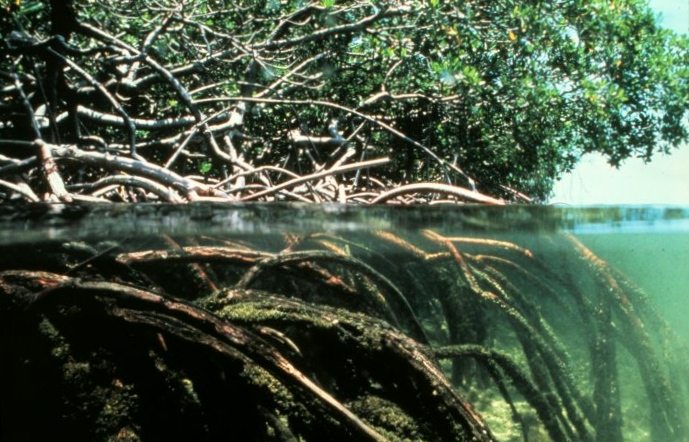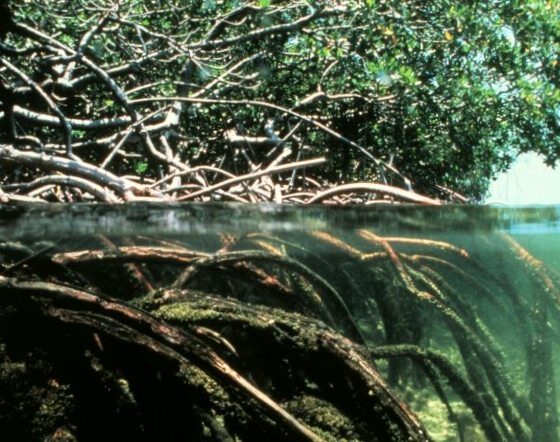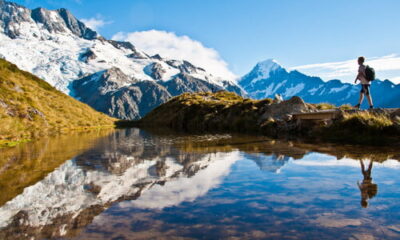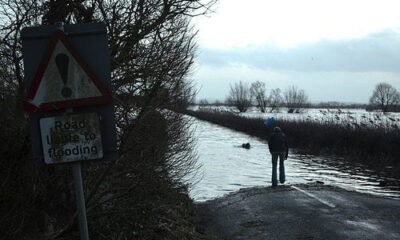

Environment
Mangroves help protect coastal areas against sea level rise
Mangrove forests could play a crucial role in protecting coastal areas from sea level rise caused by climate change, according to new research involving the University of Southampton.
A joint study between researchers at the University of Southampton along with colleagues from the Universities of Auckland and Waikato in New Zealand used leading-edge mathematical simulations to study how mangrove forests respond to elevated sea levels.
Taking New Zealand mangrove data as the basis of a new modelling system, the team were able to predict what will happen to different types of estuaries and river deltas when sea levels rise.
They found areas without mangroves are likely to widen from erosion and more water will encroach inwards, whereas mangrove regions prevent this effect – which is likely due to soil building up around their mesh-like roots and acting to reduce energy from waves and tidal currents.
Coastal estuaries and recesses in coastlines that form bays receive the run-off from erosion on steep catchments, which give them the tendency to fill in over time. As they infill, the movement of the tidal currents over the shallow areas create networks of sandbanks and channels. The sand banks grow upward to keep pace with water-level changes, while the channels get deeper to efficiently drain the excess water out to sea.
The researchers’ latest work shows that mangroves can facilitate this process, by adding leaf and root structures into the accumulating sediment, which increase the elevation while enhancing the trapping of new sediment arriving from the catchment.
Dr Barend van Maanen from the University of Southampton explains: “As a mangrove forest begins to develop, the creation of a network of channels is relatively fast. Tidal currents, sediment transport and mangroves significantly modify the estuarine environment, creating a dense channel network.
“Within the mangrove forest, these channels become shallower through organic matter from the trees, reduced sediment resuspensions (caused by the mangroves) and sediment trapping (also caused by the mangroves) and the sea bed begins to rise, with bed elevation increasing a few millimetres per year until the area is no longer inundated by the tide.”
In modelling of sea level rise in the study, the ability of mangrove forest to gradually create a buffer between sea and land occurs even when the area is subjected to potential sea level rises of up to 0.5mm per year. Even after sea level rise, the mangroves showed an enhanced ability to maintain an elevation in the upper intertidal zone.
Associate Professor Karin Bryan, from the University of Waikato, says the spread of mangroves is changing the New Zealand coastal landscape. “In New Zealand, mangroves have been traditionally viewed as undesirable as they take over areas where there were once sandy beaches. In other countries, this is not the case as they are seen as a buffer for climate change in low level areas.”
“Now we know that they also could play a critical role in buffering our coastal land from the effects of sea-level rise. Although the study is on Avicennia marina (the only species of mangrove that occurs in New Zealand), Avicennia occurs in every major mangrove habitat in the world.”
Overseas studies have shown mangroves have the ability to remove carbon from the atmosphere and protect people from hazards such as tsunami. The research team hopes that this work will enhance the case for protecting global fringing wetlands from the threats of drainage and clearance caused by development and aquaculture pressures.
“These findings show that mangrove forests play a central role in estuarine and salt marsh environments,” Associate Professor Giovanni Coco from the University of Auckland says. “As we anticipate changes caused by climate change, it’s important to know the effect sea level rise might have, particularly around our coasts.
“Mangroves appear to be resilient to sea level rise and are likely to be able to sustain such climatic change. The implications for the New Zealand coastline are considerable and will require new thinking in terms of sediment budgets and response to climatic changes.”


 Environment9 months ago
Environment9 months agoAre Polymer Banknotes: an Eco-Friendly Trend or a Groundswell?

 Environment11 months ago
Environment11 months agoEco-Friendly Home Improvements: Top 7 Upgrades for 2025

 Features8 months ago
Features8 months agoEco-Friendly Cryptocurrencies: Sustainable Investment Choices

 Features9 months ago
Features9 months agoEco-Friendly Crypto Traders Must Find the Right Exchange



























